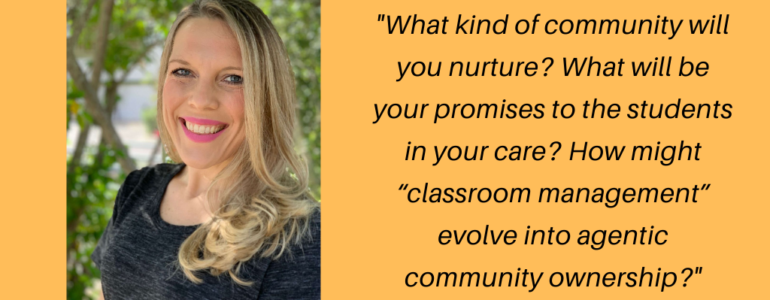By Tonya Gilchrist
As this academic year winds down for many of us, it’s an optimal time to think about how your next school year will begin. After all, ask just about any teacher, and they will tell you how important it is to set up rituals and routines at the very start of the year. Laying this groundwork pays dividends again and again.
But it’s not just that you create rituals and routines with students; it’s also vital you consider what kinds and in what ways.
What kind of community will you nurture? What will be your promises to the students in your care? How might “classroom management” evolve into agentic community ownership?
Enter: restorative and sustaining practices.
But…What exactly are restorative and sustaining practices? How do they walk hand-in-hand with your other core values: agency, inquiry, equity, and more? And where might you begin?
Develop a Restorative Mindset
Before we can begin to utilize restorative and sustaining practices, we must develop a restorative mindset. As the saying goes, “Thought leads to action.” There are six key beliefs that inform a restorative mindset.
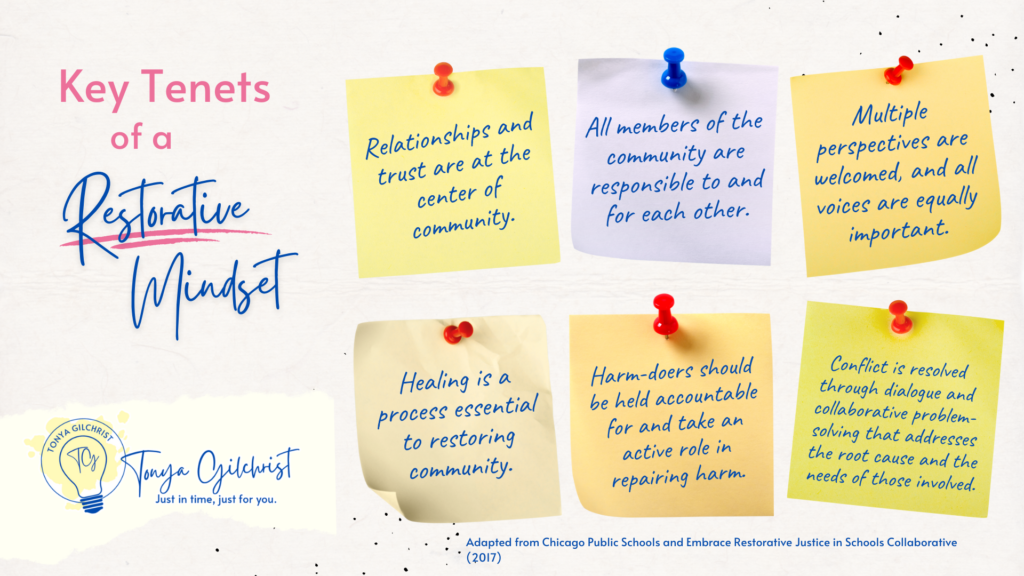
- Relationships and trust are at the center of community.
- All members of the community are responsible to and for each other.
- Multiple perspectives are welcomed, and all voices are equally important.
- Healing is a process essential to restoring community.
- Harm-doers should be held accountable for and take an active role in repairing harm.
- Conflict is resolved through dialogue and collaborative problem-solving that addresses the root cause and the needs of those involved.
As educators and school leaders, it’s vital that we are authentically living these tenets in context with one another and that we model them for children—both explicitly and implicitly. It’s also vital that we intentionally design for students to get plenty of opportunities to live and grow this kind of mindset, too.
A common misconception about sustaining and restorative practices is that they are “too soft.” However, quite the opposite is true. In many ways, sustaining and restorative practices are about not taking the “easy way out” by handling conflict with a superficial lens, but rather truly resolving conflict by getting to the root of issues, considering multiple perspectives, and problem-solving together. These practices support so many aspects of our bigger “why” as educators by nurturing open-mindedness, critical thinking, reflection and metacognition, communication skills, integrity, and more.
In fact, note number five in our list of tenets. “Harm-doers should be held accountable for and take an active role in repairing harm.” Indeed. Receiving a punishment does not make you accountable. Accountability is achieved when someone understands the impact of their actions, takes responsibility for choices, and works to repair harm done.
With restorative and sustaining practices, we are moving from a mindset of “You’re in trouble!” to “Make things right.” Punitive practices focus on blame and punishment—but we know this will not lead to true growth and lasting change. Restorative practices, on the other hand, focus on responsibility, problem-solving, and understanding—attributes that lead to developing authentic ownership, sound judgment, and integrity for life.
Use Restorative Language
Empathetic Listening
It might seem odd to see listening highlighted when discussing what kind of language to use. However, not all languages are spoken. There is so much we communicate even without words. Listening is a vital component of effective communication.
What might active, empathetic listening look like?
● Listen with your whole self—and pay attention to the speaker’s whole self, too. Paying attention to tone and body language is just as important as hearing the words a person speaks. As you listen, you might ask yourself questions like: What is the speaker’s posture? What does the look in the speaker’s eyes seem to be communicating? How loudly or softly is the speaker speaking? Which words are the speaker emphasizing?
● Put yourself in the other’s shoes. Even if you experience the same or similar situation to someone else, how you experience it can be quite different. Don’t assume you know exactly how another person feels. Instead, after listening to the speaker, follow-up with clarifying questions that seek to understand. Perhaps questions such as: What is that like for you? How did you feel when…? What did you enjoy about…? What has been the hardest part of…?
● Provide mirrors. By repeating or paraphrasing the meaning of a person’s words in a warm and caring tone, you let the speaker know that you are not judging him nor trying to control what he does next—rather, you are truly seeking to understand. Plus, through mirroring, you can help the speaker better understand herself and her emotions. You might try phrases such as: Do I understand that you feel…? What you’re saying is…? What I hear you saying is… I can see that you’re feeling…
Compassion and empathy are two of the greatest skills we can hold as humans. Are we truly “walking the walk” and living them with students? As humans, we have three basic, social needs: to feel respected, to feel accepted, and to feel significant. Empathetic listening can be a doorway to meeting those needs.
Affective Statements
Words matter. While listening is a vital part of communication, words are powerful, too. Your words can lift up opportunities for understanding and when needed, healing. One helpful frame for getting started with restorative language is what is often referred to as affective statements or “I Statements.” Examine the two examples below.
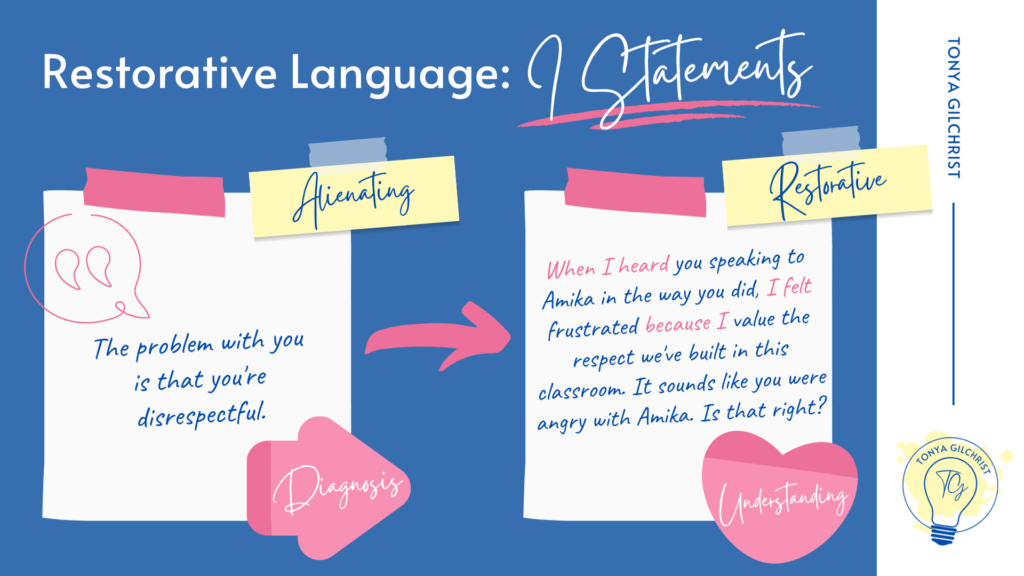
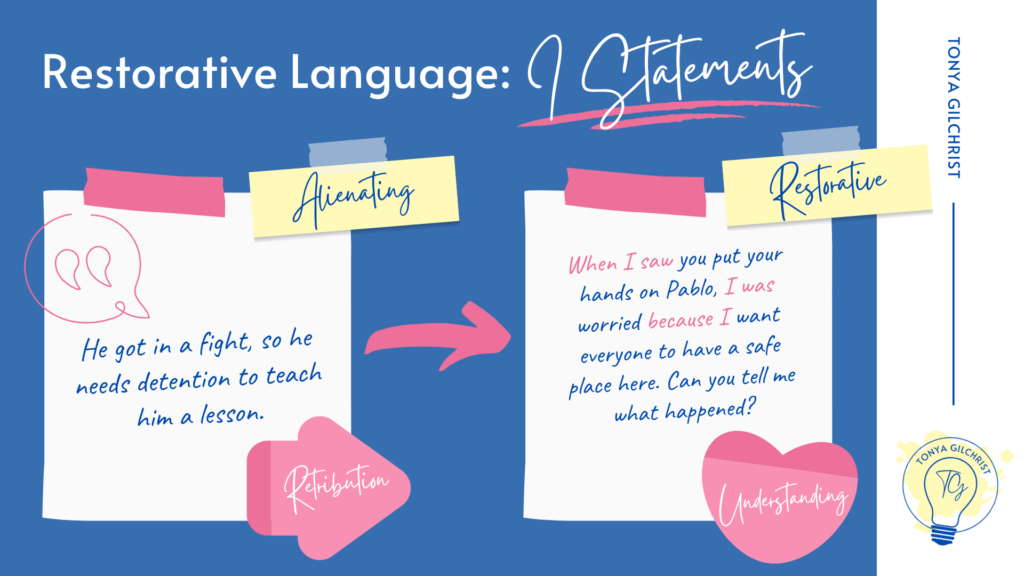
What do you notice? Imagine a likely scenario with a student in your care. How might the use of “I Statements” impact how things transpire?
Of course, “I Statements” aren’t just for adults. They become a part of our school culture and community and are used by children, teens, parents—everyone.
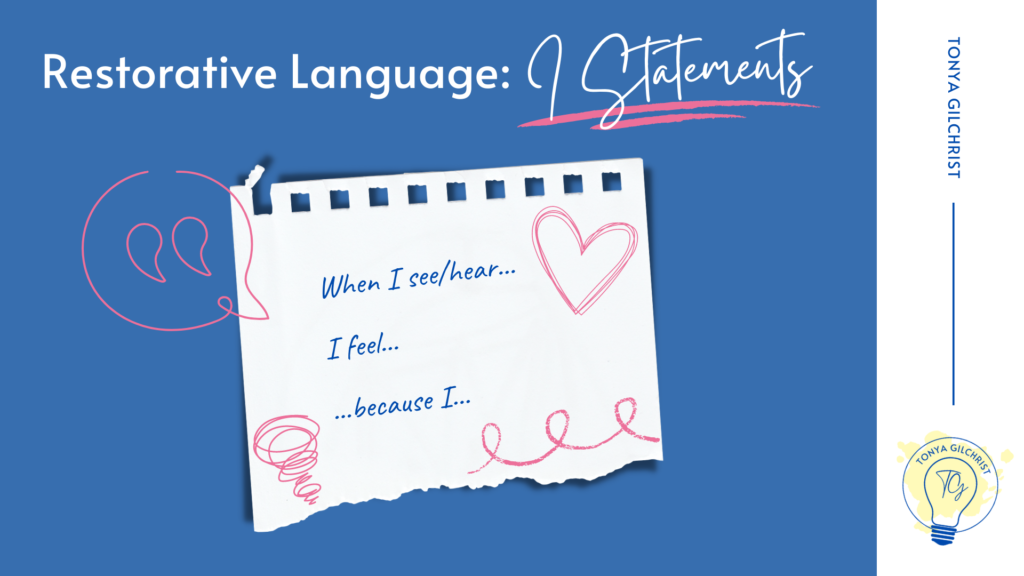
When children are provided with a frame they can use to support open-mindedness, they develop lifelong skills to communicate openly and authentically. Supporting students in building these skills is a process that takes time, clarity, and consistency—but it is oh so worth it.
You Can’t Restore What Hasn’t Been Built
It’s important to note the inclusion of the word sustaining. You can’t restore something if there’s nothing to restore it to. It is vital that we nurture cultures and communities of caring and well-being. In other words, the “norm” for our culture is to be caring, open-minded, and understanding. We sustain that through our daily interactions and ways of being—through using practices like empathetic listening and affective statements.
The norm is that our culture is healthy. However, when conflict arises—and it is natural that it will—we have practices to help us restore wellbeing, too.
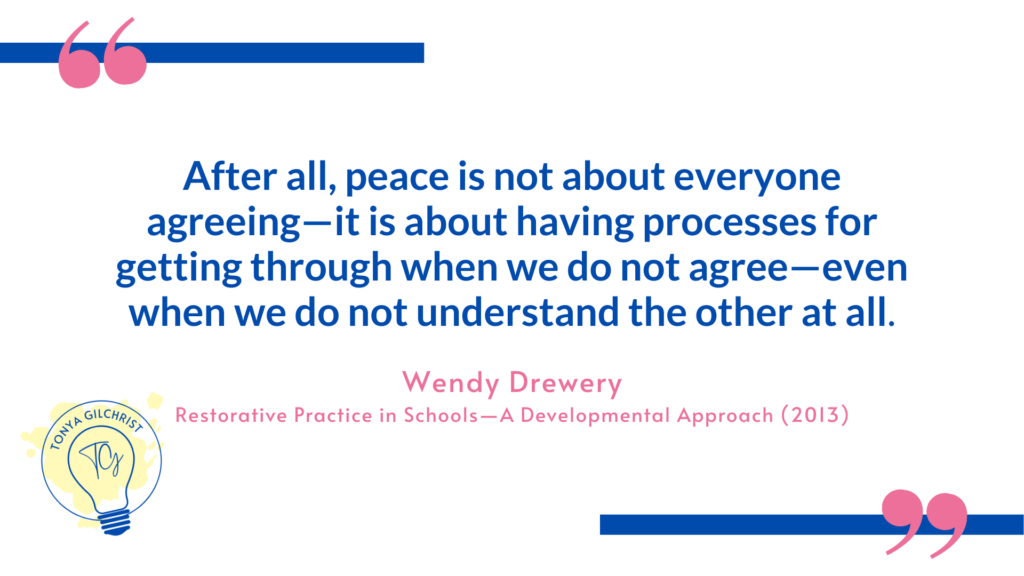
This is just the beginning when it comes to restorative practices. Starting with this strong foundation of a restorative mindset and restorative language paves the way to even more powerful practices such as restorative conversations, restorative circles, peer conferences, and more.
About Tonya
Tonya Gilchrist is an international learning strategist and consultant who specializes in helping schools around the world amplify inquiry and honor agency for deep learning and transfer across languages, literacies, and disciplines. From Readers’/Writers’ Workshop to Reggio to UDL to IB, Tonya works with schools to tailor professional learning just for their specific contexts and their unique needs. Previously, she enjoyed many years as an educator, instructional coach, and curriculum specialist. Tonya earned her Master’s Degree in Educational Leadership from Hong Kong University. She also holds an IB Certificate in Leadership Practice and an IB Advanced Certificate in Leadership Research. When she’s not onsite supporting schools all over the world, Tonya enjoys living in the Mediterranean sunshine in southern Europe with her husband.
Connect with Tonya
Website: tonyagilchrist.com
Twitter: @Mrs_Gilchrist
Facebook Page: https://www.facebook.com/tonyagilchristcom Facebook Group: https://www.facebook.com/groups/tonyagilchrist Instagram: https://www.instagram.com/tonyagilchrist/
LinkedIn: https://www.linkedin.com/in/tonyagilchrist/
![]()

